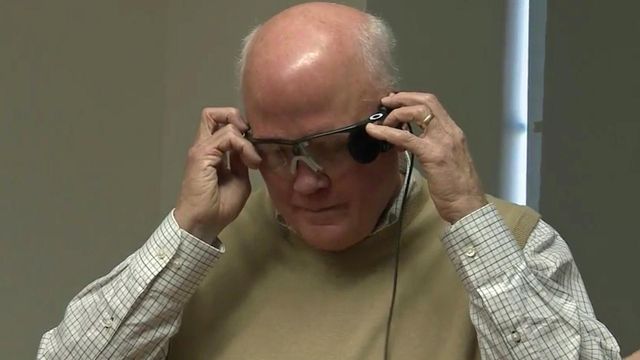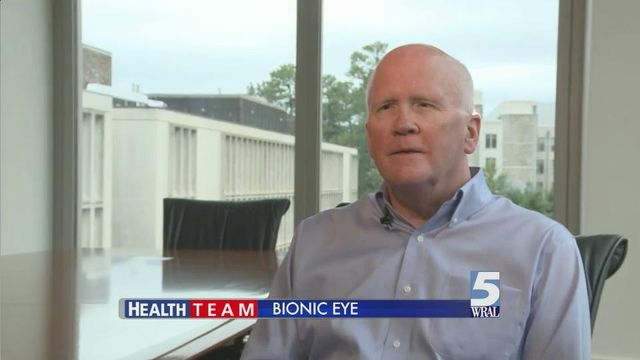Eye implant restores 'gift' of vision to blind man
An implant is helping a man who has been blind for 33 years see some images.
Posted — UpdatedThirty-three years ago, Larry Hester was diagnosed at the Duke Eye Center with retinitis pigmentosa, which quickly led to profound blindness.
Duke eye surgeon Dr. Paul Hahn in September gave Hester a new implant called Second Sight – a device inside the eye with an array of electrodes that is attached to a part of the retina that still functions.
Hester was given a special pair of glasses with a camera that sends a signal to a small processor, which then sends information wirelessly through the glasses to the implant.
On Oct. 1, after a few weeks of healing, the device was turned on.
“Can you see, Larry?” his wife, Jerry, asked after doctors switched it on.
“Yes,” he replied. “Oh my goodness, yes.”
Hester knew what he might see would be high-contrast images – bright spots and shapes. Bright objects flash like strobe lights.
For now, he only turns it on for about 30 minutes a day. His brain is still adapting to vision that's been dormant for half his life. He will continue to have the Second Sight implant system fine tuned and receive vision training therapy.
The device worked well enough recently for Jerry, to guide him outside for a look at the moon.
“There it is, a flicker of light,” he said. “That's just a wonder and it's so rewarding. I just can't tell you how fulfilling it is to experience that.”
Added Jerry, “Seeing a bit of God's creation – that we've had this opportunity, a second chance – that's a special time.”
Larry Hester said he’s also seen bright flowers and a white duck on a pond.
They are only flashes of light and dark. Yet to him, they are beautiful all the same.
“This is very special,” he said. This is a gift.”
• Credits
Copyright 2024 by Capitol Broadcasting Company. All rights reserved. This material may not be published, broadcast, rewritten or redistributed.






